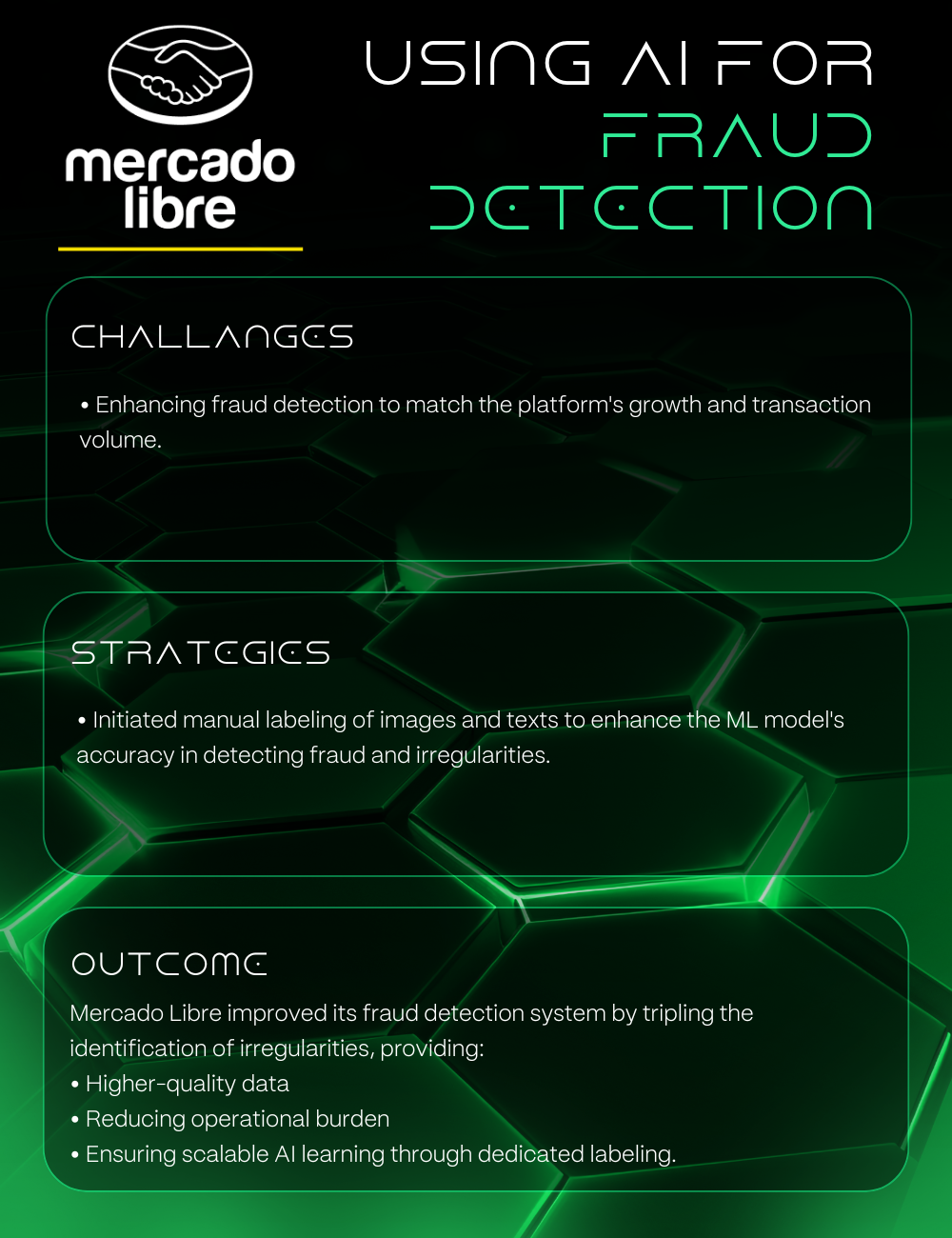Implementing Deep Learning for Fraud Detection: Best Practices for Financial Institutions
Digitalizing financial institutions has profoundly improved the process but has also generated new fraud paths. Surveys show that cyber-attacks are becoming more common, causing substantial economic losses.
Bank transfers and payments in 2022 showed a loss of $1.59 billion in the USA, and the global cost of cybercrime is estimated to soar to $10.5 trillion by 2025. Banking institutions have turned to AI, intense learning, facing these financial losses, as a powerful tool to detect and prevent financial fraud.
This blog will cover everything you need to know about using deep learning for fraud detection in financial institutions.
Can Deep Learning Help in Fraud Detection?
Deep learning is an effective tool for fraud detection as it can process complex data and identify intricate patterns. By using artificial neural networks with multiple layers, deep learning models can understand and interpret data in a way that reveals hidden patterns, helping to detect fraud.
Deep learning has some great benefits compared to traditional methods. Here are the advantages of using deep learning mentioned:
1. Automatic Learning: Deep learning models can automatically identify important data features without specific instructions. This is especially useful for tasks like image recognition, where defining every feature is tough.
2. Handling Complex Data: These models can process large and complex datasets that traditional methods struggle with. They can uncover valuable insights from big data.
3. Improved Performance: Deep learning has proven very effective, achieving top results for speech and image recognition, natural language tasks, and more.
4. Predictive Modeling: These models can make predictions, helping organizations plan and make strategic choices.
5. Handling Data: Deep learning works with structured and unstructured data, such as text, images, and audio.
6. Understand Sequences: Certain deep learning models excel at sequential data like time series, speech, and text. They can remember and use past inputs to make decisions.
7. Scalable: These models can be easily scaled and deployed on various platforms, showing adaptability.
8. Generalization: Deep learning models can apply what they've learned in one context to new, similar situations, showing their ability to generalize.
Best Practices for Implementing Deep Learning in Fraud Detection
Implementing deep learning for fraud detection requires a strategic approach to ensure accuracy. Here are some of the best practices to implement deep learning:
1. Keep Your Data Prepared
It involves cleaning, transforming, and organizing data to ensure high quality and suitability for training effective models. Here are the steps to follow:
- Data Collection: Gather comprehensive data from various sources, including transaction details, customer information, and historical records.
- Data Cleaning: Handle missing values, duplicates, and outliers to ensure data integrity.
- Data Standardization: Normalize data to maintain consistency and compatibility with deep learning algorithms.
- Data Transformation: Apply scaling or logarithmic transformations to adjust data distribution and improve model performance.
- Data Sampling: Address class imbalance through oversampling, undersampling, or synthetic data generation to ensure the model learns from legal and fraud cases.
2. Incorporate Feature Engineering
It is critical in transforming raw data into relevant features for machine learning. Here, we will explore how you can do it for fraud detection:
- Transaction Data: Extract features like transaction amounts, frequencies, and currencies to identify spending patterns.
- Time-Based Features: Create features such as transaction time, day of the week, or time elapsed between transactions to capture temporal patterns.
- Customer Profile: Encode customer information like age, demographic data, and behavioral patterns to identify high-risk or suspicious behaviors.
- Geographic Data: Incorporate location-based features, such as transaction origin or customer residence, to detect potential fraud patterns associated with specific regions.
- Behavioral Patterns: Analyze and engineer features that capture typical customer behavior to detect deviations that may indicate fraud.
3. Select the Right Deep Learning Model
Fraud detection is essential, but figuring out the right deep-learning model can make or break it for you. Here are the steps toward the right model:
Define your Problem
Clearly define the type of fraud you are trying to detect, as different types may require different model architectures. For example, credit card fraud detection may benefit from CNNs, while insurance fraud detection may be better suited for RNNs.
Evaluate and Select the Right Model
Use appropriate performance metrics to evaluate the model's effectiveness, such as precision, recall, F1-score, and area under the receiver operating characteristic curve (AUC-ROC). Cross-validation and comparison of multiple models can help identify the best-performing architecture for the specific fraud detection task.
Transfer Learning
Consider using pre-trained models, especially if your dataset is relatively small. Transfer learning allows you to leverage knowledge from similar domains or tasks, speeding up the training process and improving model performance.
4. Always Monitor Transactions
This involves continuously monitoring financial transactions in real time, including credit card purchases, fund transfers, withdrawals, and deposits. During monitoring, transaction data is gathered from various sources, such as bank accounts, credit card systems, and online payment gateways. Deep learning algorithms then analyze this data in real time.
5. Detect Anomalies
Deep Learning models are trained to spot unusual transactions and operations. The system alerts if a transaction deviates from a customer's usual behavior. For example, a large withdrawal from an account that usually doesn't have such activity could trigger an alert.
6. Perform Predictive Analytics
One can spot patterns related to fraudulent transactions by looking at historical data. It extracts essential details from past transactions and training models to predict future fraud transactions. These models keep learning and adapting, making detecting fraud early and assessing risks easier.
Case Studies of Using Deep Learning to Detect Fraud
Let’s discuss real-life examples and case studies of successful implementations of deep learning for fraud detection:
PayPal Using Deep Learning for Fraud Detection
A well-known American company, PayPal provides online payment services, making sending and receiving money electronically accessible. With 435 million active accounts worldwide, PayPal facilitates billions of transactions and supports multiple currencies across 200 markets through its API-powered real-time payment solution.
PayPal's AI detected a series of transactions that deviated from a user's usual behavior. The system flagged these transactions as suspicious, leading to the discovery of a compromised account. This successful prevention of unauthorized transactions highlights the effectiveness of behavioral analytics in fraud detection. It demonstrates PayPal's commitment to safeguarding user accounts by adopting advanced AI technologies.
Amazon Using Deep Learning for Fraud Detection
It is a well-known American company that offers various e-commerce services, including online shopping, cloud computing, advertising, streaming, and AI technology.
It has adopted deep learning for fraud detection, which employs machine learning algorithms to detect fake reviews. These algorithms analyze various factors, including language, reviewer behavior, and review timing. This helps identify and remove fraudulent reviews from their platform, thus ensuring genuine customer feedback.
Some of its use cases include the following:
- Online Payment Fraud: Deep learning models can flag suspicious transactions before processing them, reducing the potential for fraud and financial loss.
- New Account Fraud: The system distinguishes between legitimate and high-risk account registrations, allowing additional verification checks to be implemented selectively.
- Trial and Loyalty Abuse: Models identify accounts likely to abuse trial or loyalty programs, setting appropriate limits on offer values to minimize risk and protect your business.
- Account Takeover: Compromised accounts are detected while minimizing friction for legitimate users, ensuring a secure login experience.
Mercado Libre Using Deep Learning for Fraud Detection
Latin America's leading online commerce and payments platform, Mercado Libre, operates in 18 countries. Its strong market presence connects buyers and sellers through its ecosystem, facilitating convenient and secure transactions.
It connects nearly 73 million buyers and sellers with a daily average of 1.7 million packages delivered and 57 million new users. Mercado Libre needed an external team that could improve image and text labeling to help its Machine Learning model prevent fraud and verify the quality of transactions.
Here’s how they did it:

Challenges of Using AI for Fraud Detection
Deep learning enhances implementation for fraud detection, but it comes with challenges. Here is a list of things one needs to remember:
1. Interpretability and Explainability
Deep learning models are often seen as "black boxes," making it challenging to understand why they make certain predictions. Interpreting and explaining model decisions is crucial for building trust and ensuring regulatory compliance.
2. Data Privacy and Compliance
Handling sensitive financial data requires strict adherence to privacy regulations, such as GDPR or PCI DSS. Ensuring data security and privacy is essential to protect customer information.
3. Accuracy vs. Customer Experience
Achieving a balance between accurate fraud detection and minimizing false positives is critical. False positives can negatively impact customer experience, while accurate detection ensures customer protection.
4. Model Monitoring and Updates
Fraud patterns evolve, so continuous monitoring and model updates are necessary. To maintain effectiveness, regularly assess the model's performance and adapt it to changing fraud trends.
Final Thoughts
Deep learning offers a powerful and effective solution for fraud detection in the financial industry. By adopting these advanced techniques, financial institutions can enhance their fraud prevention systems, minimize losses, and protect customers. This technology improves accuracy and adapts to evolving fraud patterns. By using deep learning, institutions can avoid fraud and maintain the integrity of their digital transactions, fostering a secure and trusted environment for their customers.
Financial institutions are encouraged to recognize the significance of deep learning in fraud detection and take proactive steps toward integrating these innovative solutions into their existing frameworks to combat fraud effectively.





